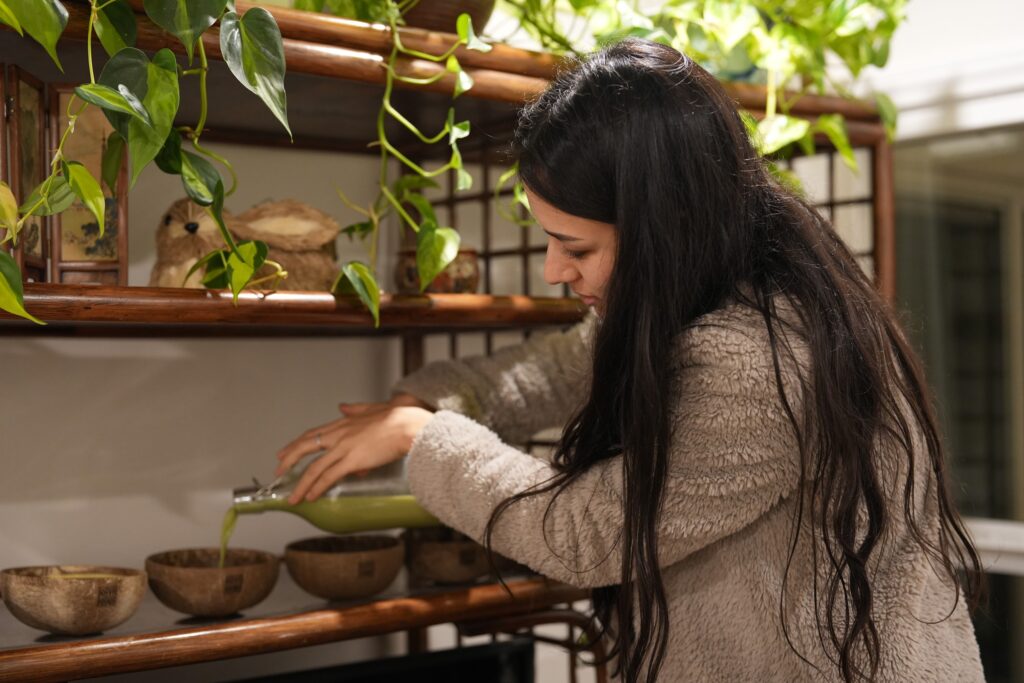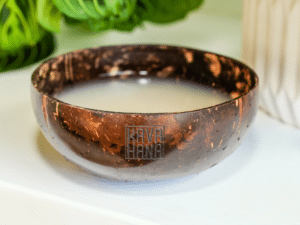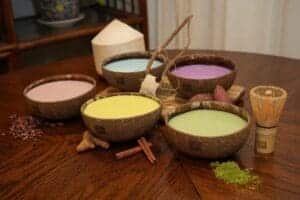Kava is an earthy drink made from the root of the pepper plant Piper methysticum, found in the Pacific Islands. To make kava, the root is harvested and ground into a fine powder, which is then added to water to steep before being strained out, leaving just the earthy drink behind. There are other ways that kava is made. Traditionally, it also involved chewing the root to break it down, but we don’t do that here.
Kava comes in four common forms: traditional grind, Instant, micronized, and extracts. Each refers to how it’s prepared. No matter how you make it, the result will be similar. It depends on how much time you have and how close you want to be to the tradition of kava.
Traditional grind kava
At Kavahana, we love the traditional way. It’s the most authentic way kava is made and involves a multi-step process that includes dried kava root. The plant is pulverized, steeped in water, then strained, leaving the earthy beverage behind. This is how it’s been prepared in the Pacific Islands for centuries, and it gives preparers a closer cultural experience that often goes hand-in-hand with drinking kava. In Fiji, the term Grog refers to a big batch of kava made traditionally.
Instructions:
- Gather your ingredients and tools. You need:
- A fine woven bag to strain kava root (e.g. Mesculin bag is recommended)
- High-grade kava root
- Cold or room temperature water.
- Bowl to mix kava (medium to large is best)
- Small cups to drink from
- Kitchen scale (for measuring dose)
- Measure kava dose. The recommendation is about 10grams (0.4 oz) of powdered kava
- Put kava in a strainer bag, tie it off, and place it in the bowl
- Add cold or room temperature water and let sit for 3-5 minutes.
- Mash! Here is where you want to massage or knead the bag. This helps get all the goodness out into the water. It should look muddy brown now. Do this for about 10 minutes.
- Strain! Strain the kava by squeezing all the liquid from the bag. (You can get up to 3 steeps with one bag, so don’t throw this away!)
- Pour in your cup and Enjoy!
Instant kava
Instant kava is a great option for a less intensive preparation process. This form of kava uses an instant formula extracted from dehydrated green kava roots. This preparation is often referred to as Toss and Wash.
To make instant kava, you need only an instant product and add it to water or your favorite beverage. This form of kava is very easy, smooth, and potent. You usually only need to use 30-50% of the amount used in making traditional kava to get the same effects. Due to the process, it is more expensive than other forms, but it may be worth it for the convenience.
If you don’t have or can’t find instant kava, another way to make “instant” kava is by using traditional kava root in a blender. Simply measure your kava dose, add it and water to your blender, and mix on high for about 4 minutes. Pour it through a strainer bag to catch the kava root, and enjoy!
Micronized kava
This form of kava is a bit more controversial, but it’s a more affordable form of instant kava. It involves grinding the kava root so fine that the end powder is so fine it’s easily mixed like instant kava powder. The process takes extra work but is not nearly as labor-intensive as making instant kava.
The problem is that no matter how much kava root is ground down, there will always be some residue and texture left. Kava root is very tough to digest, so this form can cause stomachs in some people more than others. Even the best and most premium micronized kavas have this issue.
It’s often an attractive form for new kava drinkers because of the price point and convenience. But it’s been known to ruin first-timer experience. Because of this, it’s usually recommended that only experienced kava drinkers use this form of kava as they know what to expect from it and are already used to its effects on the body and mind.
Kava extracts
Extracts are condensed forms of herbal medicine. They are often found in liquid to be added to drinks, water, or directly under the tongue.
Kava extracts are not as widely known as they aren’t commonly used in the traditional plant form. However, they do provide an easy way to get the benefits of kava without needing to make and drink the beverage. This type of kava is made by soaking kava root in a liquid to extract the kavalactones into a concentrated state. Some are even flavored to help with the earthy taste of kava.
No matter how your kava is made, be sure you use the highest quality you can find. This will ensure you have a great experience all around.
* Please note that the majority of kava research pertains to kava extracts, which often undergo significant processing and may contain additional ingredients and fillers that can influence their efficacy. It is crucial to consider this distinction when reading about kava studies. To draw an analogy, enjoying natural kava as a beverage can be likened to experiencing a freshly brewed cappuccino, whereas kava extracts are akin in functionality to a caffeine pill. Both forms have their unique benefits and can cater to different preferences and needs. While it’s helpful to understand research on kava extracts, please view it critically and remember that natural kava offers a uniquely holistic experience.
Tags: micronized kava, instant kava drink, what is kava made of, how to make kava powder, what is kava made out of, how is kava made, kava to water ratio, traditional kava







